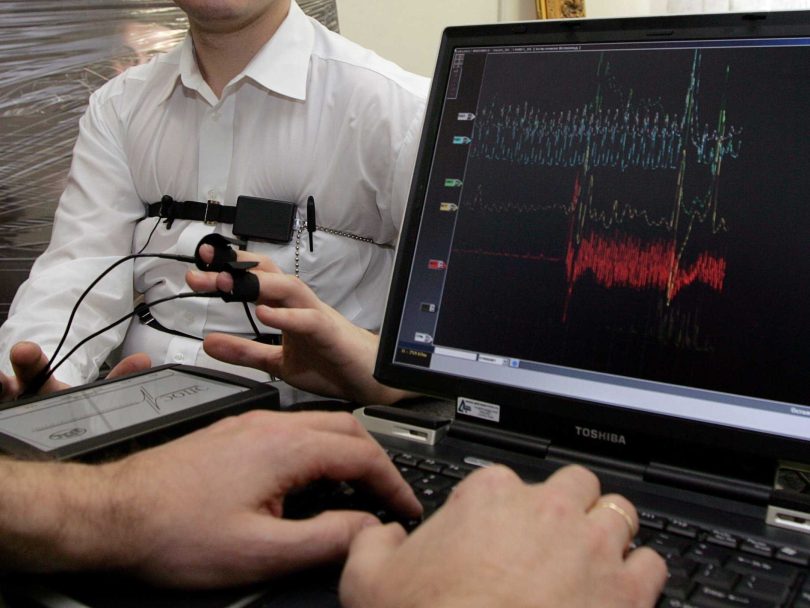Introduction: The Fascination with Detecting Lies
For decades, lie detector tests have captivated the public imagination. From television crime dramas to real-life courtroom dramas, polygraph tests are often portrayed as infallible truth-telling machines. But how much of that portrayal holds up under scrutiny? In states like New York, where legal, scientific, and ethical concerns frequently intersect, the role of the polygraph is particularly complex. The question remains: can a polygraph actually detect lies, and how is it used within the legal and employment systems in New York? This article explores the science, application, and controversy surrounding lie detector tests, focusing on their role in New York’s legal and occupational landscape.
What Is a Polygraph Test?
At its core, a polygraph—commonly known as a lie detector—is an instrument designed to record physiological responses to questions. These responses include changes in respiration, blood pressure, heart rate, and electrodermal activity (sweat gland activity). The premise is that when a person tells a lie, their body exhibits subtle stress responses that can be measured by the machine. A typical polygraph session involves a trained examiner who asks a series of control and relevant questions while the machine records the examinee’s physiological data. The examiner then interprets this data to determine whether the individual is being deceptive.
Polygraph tests have been around since the early 20th century. The modern polygraph was developed in the 1920s by John Augustus Larson, a police officer and physiologist. Since then, polygraphy has become a tool frequently used in law enforcement, national security, and certain employment screenings. However, its reliability and admissibility vary widely depending on the jurisdiction.
How Polygraph Tests Work: The Science Behind the Machine
The polygraph does not actually detect lies. What it does is monitor physiological indicators that are believed to be associated with stress or arousal, such as increased heart rate, faster breathing, and skin conductivity. During the exam, the subject is connected to several sensors, including:
- Pneumographs that measure breathing rate and depth.
- Electrodermal sensors that measure skin conductivity (a proxy for sweating).
- Cardiovascular sensors that record heart rate and blood pressure.
A polygraph test typically consists of three stages: the pre-test interview, the chart collection phase, and the post-test analysis. In the pre-test phase, the examiner builds rapport with the subject and explains the procedure. Control questions (to which the answers are known) and relevant questions (related to the issue under investigation) are asked to establish baseline responses. The recorded physiological changes are then analyzed to detect significant deviations that might indicate deception.
Despite its scientific appearance, the polygraph’s methodology remains controversial. Critics argue that stress responses can be triggered by a variety of factors unrelated to lying, such as anxiety, fear, or even physical discomfort. This lack of specificity means that while polygraph tests may suggest deception, they cannot conclusively prove it.
Polygraph Testing in New York: Legal Status and Applications
New York has a complex relationship with polygraph testing. Unlike some other states, New York law generally does not allow the results of a polygraph test to be used as evidence in court—whether in criminal or civil cases. This position is largely due to the concerns about the reliability and subjectivity of the results, as well as the potential for misuse.
However, polygraph tests are not entirely banned in New York. They are sometimes used in pre-employment screenings and internal investigations, particularly for jobs involving law enforcement or national security. Federal agencies operating in New York, such as the FBI or CIA, routinely use polygraphs during hiring processes and periodic security clearances. In these cases, the polygraph is used more as an investigative tool than as a definitive truth-teller.
In criminal investigations, New York law enforcement agencies may offer a suspect the opportunity to take a polygraph test. While the results are typically not admissible in court, they may influence investigative decisions or plea negotiations. It’s important to note that suspects are not legally obligated to submit to a polygraph, and results—even if they suggest innocence—do not guarantee exoneration.
The Ethics and Controversies Surrounding Lie Detectors
The use of polygraph tests raises significant ethical and legal concerns, especially in a diverse and high-stakes environment like lie detector test in New York. One major criticism is that polygraphs can yield false positives, where innocent people are incorrectly flagged as deceptive. This can have serious consequences in employment, legal, and personal contexts.
Moreover, the interpretation of polygraph results is highly subjective. The examiner’s training, experience, and even biases can affect the outcome. In some cases, examinees have reported being coerced or manipulated during polygraph tests, which raises further concerns about informed consent and psychological pressure.
Another issue is the potential for countermeasures—intentional tactics used by examinees to manipulate their physiological responses. These can range from controlled breathing to physical discomfort (e.g., biting the tongue or pressing toes to the floor). While experienced examiners are trained to detect these tactics, their effectiveness continues to be a subject of debate within the polygraph community.
Are Polygraph Tests Accurate?
Accuracy is perhaps the most hotly contested aspect of polygraph testing. Proponents claim accuracy rates as high as 90% or more under ideal conditions. However, independent studies, including those conducted by the National Academy of Sciences, have questioned these figures, citing significant variability and potential bias.
The reality is that polygraph results depend heavily on factors such as:
- The skill of the examiner
- The mental and physical state of the examinee
- The design of the questions
- The specific polygraph technique used
For these reasons, most scientific organizations, including the American Psychological Association, maintain a cautious stance on the reliability of polygraph testing. While it can be a useful tool in certain contexts, it should not be viewed as a definitive indicator of truth or deception.
The Future of Lie Detection in New York and Beyond
Advancements in technology are paving the way for new forms of lie detection that may eventually replace the traditional polygraph. Techniques such as functional MRI (fMRI), voice stress analysis, and AI-based facial expression recognition are being explored as potentially more accurate and objective methods of detecting deception. However, these technologies are still in their infancy and face their own ethical and scientific challenges.
In New York, where legal scrutiny is high and public accountability is paramount, any new technology will likely undergo extensive vetting before being widely adopted. For now, the traditional polygraph remains a controversial but occasionally utilized tool in the legal and employment arenas.
Location In New York
- Harrison – 500 Mamaroneneck Avenue, Harrison, NY 10528
- Garden City – 1225 Franklin Ave, Garden City, NY 11530
- New York City – 60 East 42nd Street, 46th Floor, New York, NY 10165
- Yonkers – 73 Market Street, Yonkers, NY 10710
- Albany – 401 New Karner Rd 3rd Floor, Albany, NY 12205
- Syracuse – 323 James St, Syracuse, NY 13203
- Bronx – 1500 Astor Ave 2ND FLOOR, Bronx, NY 10469
- New Rochelle – 173 Huguenot St, New Rochelle, NY 10801
- Rye – 411 Theodore Fremd Ave South, Rye, NY 10580
- Lake Success – 1979 Marcus Avenue, Lake Success, NY 11042
- Suffern – 400 Rella Boulevard, Suffern, NY 10901
- Tarrytown – 520 White Plains Road, Tarrytown, NY 10591
- Rye Brook – 800 Westchester Avenue, Rye Brook, NY 10573
- Purchase – 287 Bowman Avenue, 2nd Floor, Purchase, NY 10577
- Pearl River – 1 Blue Hill Plaza, 3rd Floor, Pearl River, NY 10965
- Port Jervis – 15 Jersey Avenue, Port Jervis, NY 12771
- Haverstraw – 87 Route 9W, Haverstraw, NY 10927
- New City – 254 South Main Street, New City, NY 10956
- Armonk – 200 Business Park Drive, Armonk, NY 10504
- Hawthorne – 7 Skyline Drive, 3rd Floor, Hawthorne, NY 10532
- Briarcliff Manor – 555 Pleasantville Road, Briarcliff Manor, NY 10510
- Tuxedo Park – 1 Serenity Plaza, Tuxedo Park, NY 10987
- Brewster – 1620 Route 22, Brewster, NY 10509
Conclusion: Proceed with Caution
Polygraph tests—often called lie detectors—occupy a murky space between science and pseudoscience. While they offer some utility in specific investigative or employment settings, their reliability remains heavily disputed. In New York, their role is particularly limited by strict legal standards and ethical concerns. The courts generally do not accept polygraph results as evidence, and employers are heavily restricted in their use.
Whether you’re a job applicant, a legal professional, or simply a curious observer, it’s essential to understand the limitations and implications of polygraph testing. The myth of the infallible lie detector persists in popular culture, but in practice—especially in a legally cautious state like New York—it’s wise to treat polygraph results with skepticism and critical thinking. As technology evolves, we may one day have more accurate tools for detecting deception, but for now, the polygraph remains an imperfect window into the complexities of human truth and behavior.







